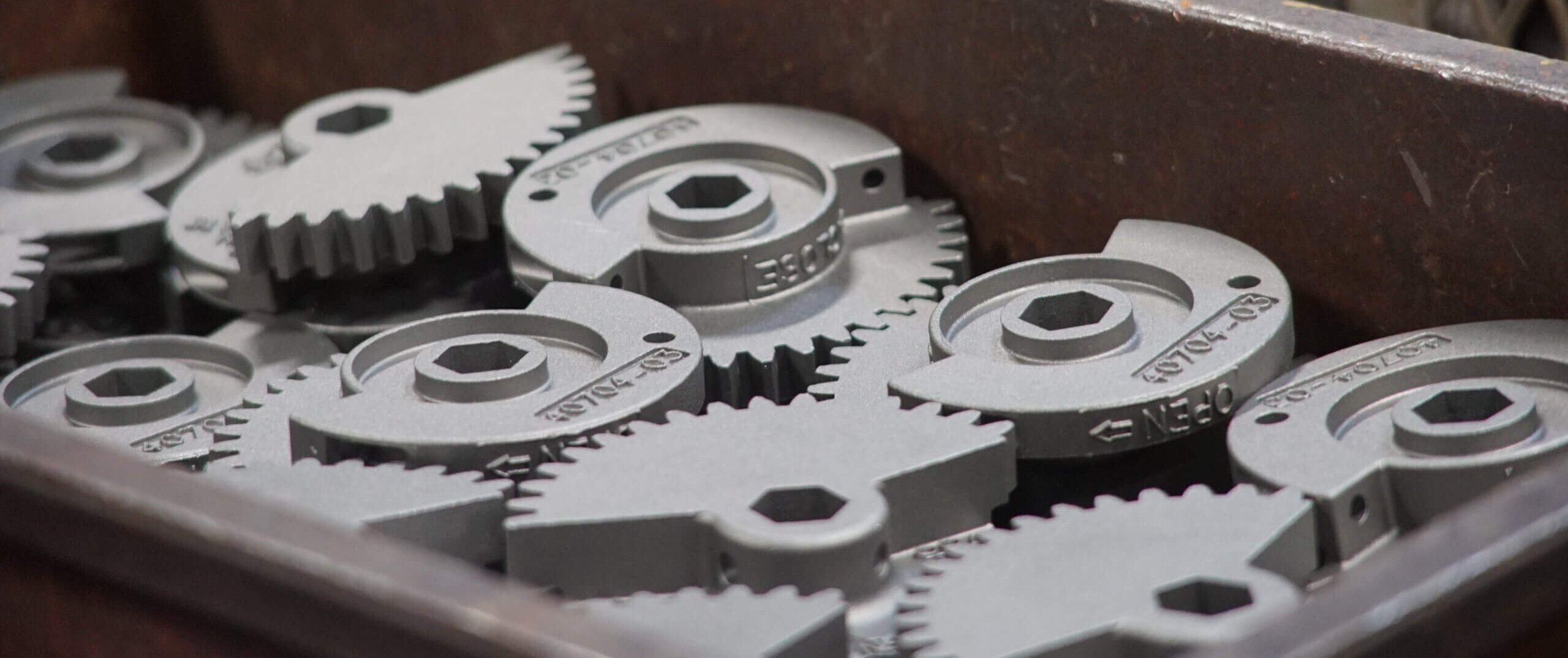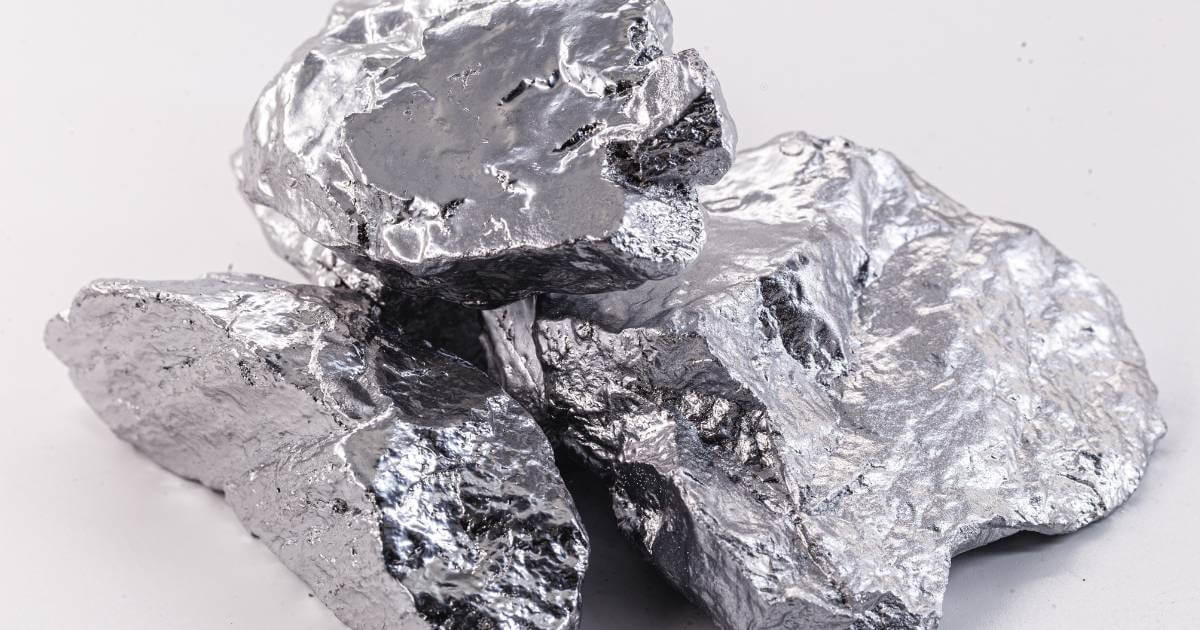Niagara Investment Castings has the expertise to work closely with our clients to help them understand what alloys will work best for their specific applications. Our years of metallurgical and casting experience can help us to answer your questions about how the various alloyed steels and stainless steels are designed, what the alloying elements are doing to the characteristics of the alloy, and how you can take advantage of this knowledge for your optimal alloy selection.
Our expertise and experience in casting the many alloys we offer will be invaluable to our clients when they need to know what metal alloy will work best in their specific applications.
Niagara Investment Castings produces high quality investment castings in a wide range of alloys, including carbon steel and many other non-ferrous alloys such as brasses, bronzes, cobalt based alloys, and nickel based alloys. However, by far, the greatest amount of cast metal we produce is in the family of alloyed steels due to the wide range of applications that alloying a basic steel will fulfil.
If you require assistance with any advise related to our alloys offered and what might be best for YOUR specific application, please just ask your Niagara Investment Castings Sales Representative, and we will be happy to assist you.

What Is Alloy Steel?
Steel, in its simplest form, is a mixture of the pure elements of iron, which is very soft by itself, and carbon, generally from 0.02% to 2.0%. Carbon is a critical component of any steel as it is what renders the iron strong and hard through a unique metallurgical relationship with iron.
Essentially, an alloy steel is this basic iron and carbon mixture that is mixed, or alloyed, with a variety of other metal elements in total amounts between 1.0% and 50% by weight. These additional elements allow the basic steel to change its properties in a multitude of ways and for many reasons, including increasing its strength, increasing its hardness and/or hardenability, to render the steel corrosion resistant (stainless steel), or to allow the steel to be used in higher temperature applications without losing its integrity or strength.
What are the elements in alloy steel?
Some of the more commonly used elements that are added to form an alloyed steel are as follows:
- Chromium: Adds hardness, increases metal toughness, and increases wear resistance. It is also the key ingredient of any stainless steel due to its ability to impart corrosion resistance to a steel.
- Cobalt : Used in making cutting tools and improves the “hot hardness” of the alloy.
- Manganese: Increases surface hardness, improves resistance to shock and strain.
- Molybdenum: Increases the strength of the alloy, and adds pitting resistance to stainless steel.
- Nickel: Increases strength and toughness, and is one of the key components in stainless steel as it increases the corrosion resistance.
- Tungsten: Adds hardness and improves grain structure. It also imparts high temperature strength and resistance to heat damage.
- Vanadium: Increases strength, toughness, and shock resistance. It also imparts some additional corrosion resistance. Mixed with chromium, the two elements together greatly increase tensile strength of steel.

Alloy Steel vs. Stainless Steel
While basic alloyed steels can be found all around us in everyday life, one of the most unique and beneficial alloying techniques for steel is the addition of a combination of nickel and chromium into the steel to form stainless steel.
As the name suggests, stainless steel finds a wide range of applications because it has the strength and durability of steel, but with the added benefits of it not rusting. It can be highly polished for brilliant appearances, and some variations of stainless steels can be hardened to exceptionally high hardnesses. Other stainless steels can be used in applications where withstanding high temperatures without losing its strength is critical.
This ability to resist rusting is thanks to its chromium content of at minimum 10% content. The chromium forms a thin, invisible layer of oxide on the surface that stops corrosion in its tracks.
While some stainless steel contains only chromium as its alloying ingredient, more often than not, the alloy also contains varying amounts of nickel and molybdenum too for an extra level of corrosion resistance and durability. These alloys form the group of stainless steel known as “18-8 austenitic” stainless steel, by far the most commonly used group of stainless steel alloys due to the flexibility the alloys offer, their ease of machining and welding, and their ability to offer a perfect blend of strength and corrosion resistance to many corrodents.
Many stainless steels also use other minor alloying elements such as nitrogen, niobium, copper, tantalum, titanium, and cobalt, to impart a wide range of specific characteristics to the basic stainless steel alloy. The variations are limitless.
From food handling and preparation, to pumps and valves, to critical medical equipment, stainless steels are found all over the world in applications where corrosion resistance, strength, hygiene, attractiveness, and versatility, are vital.
How Strong is Alloy Steel?
Steel is recognized by design engineers as one of the most versatile materials they have at their disposal. While newer composite materials are being developed and finding new applications daily, the age old material of alloyed steel will never lose its place as the most utilized material available due to its incredible strength, and the wide range of applications it can be used in thanks to alloyed steels responsiveness to the effects of heat treatment on this strength.
Through a combination of various alloying elements, some alloyed steels can reach strengths of up to 200 PSI tensile strength, allowing them to be used in some of the most critically demanding applications known to mankind, such as structural steel in sky scrapers, or components used in aircraft. Change up those elements, and the alloy steel can be made to withstand intense abuse through constant impact or vibration, such as the equipment used in mining, the oil fields of the world, or our crucial military equipment. Change the alloy content again, and you have steel that can be made to be so hard, it will withstand the forces that would collapse many other materials. In fact, these steels are so hard, they are used in metalworking machinery to cut into other metals.

Why Alloy Steel Is Perfect for Investment Castings
Steel is one of the worlds greatest inventions ever created, and you cannot live one day on this planet without benefitting from the multitude of various types of steel that are all around you in our homes, our vehicles, and even the medical devices inside your body.
Investment casting of steel is one of the most versatile and flexible ways to produce an endless variety of geometries that make up much of the steel components used today. Most any kind of steel can be cast, and we can provide your components in a fully heat treated condition to take advantage of the optimum mechanical properties, or even provide the castings finish machined and ready to use in YOUR application.
Choose Niagara Investment Castings for Your Casting Applications
We are here to answer any questions or concerns about your casting designs. Please contact us here to start the discussion!
